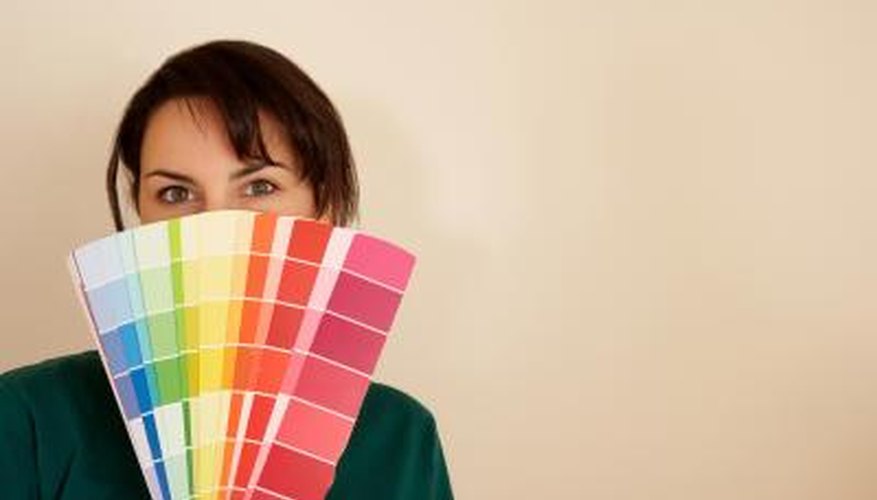Plaster of Paris is used in many art and craft projects. In its natural form it is a white, chalky gypsum stone similar to cement. Plaster can be painted any colour, but because it is relatively soft, any chips will appear as bright white spots in the finish. This problem can be solved by dying the plaster, providing a uniform colour. Even if the plaster is scratched or chipped, the colour will remain the same.
Mix the colour that you want using red, blue and yellow tempera paint in a small container. It is essential to do this in advance if you need to dye several batches of plaster the exact same colour. If you plan to dye the plaster red, blue or yellow directly from the paint bottle, skip this step.
- Plaster of Paris is used in many art and craft projects.
- Mix the colour that you want using red, blue and yellow tempera paint in a small container.
Mix a batch of plaster and water in a mixing bucket. Follow the mixing directions on the plaster packaging, using cool water to slow the setting time. This will give you time to mix in the paint.
Add the paint to the plaster a few drops at a time until you reach the colour intensity that you want. Keep track of how much paint you add if you want to recreate the colour in future batches.
Use the dyed plaster in your project the same way you would with uncolored plaster. Adding dye does not make a noticeable change in the consistency, so no modifications in its use are needed.
- Mix a batch of plaster and water in a mixing bucket.
- Use the dyed plaster in your project the same way you would with uncolored plaster.
TIP
As tempera paint only comes in red, blue and yellow, you must mix them to get other colours. A few combinations are: Red + Blue = Purple Red + Yellow = Orange Blue + Yellow = Green Red + Blue + Yellow = Brown-Gray
